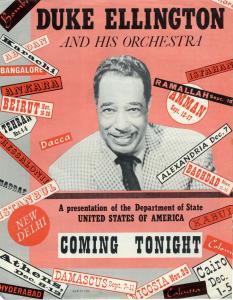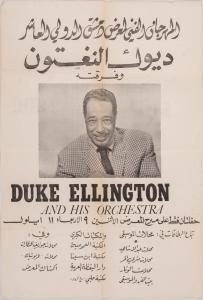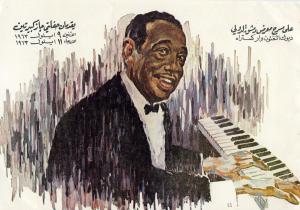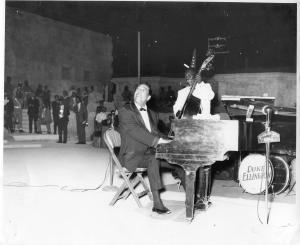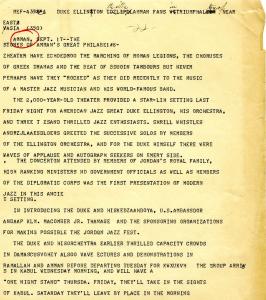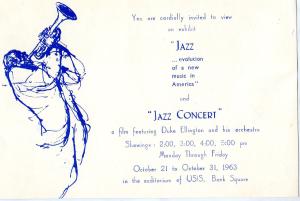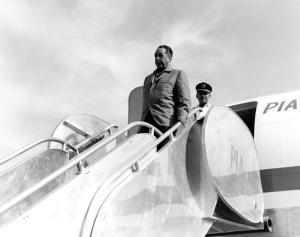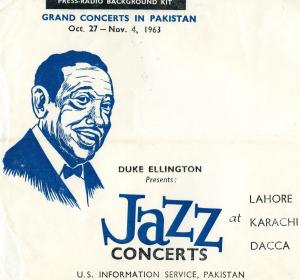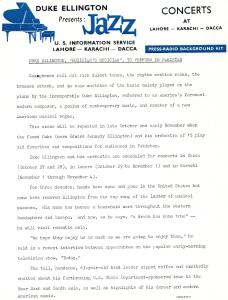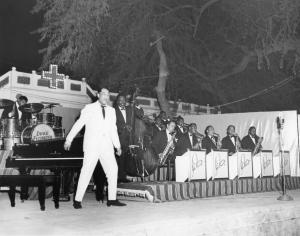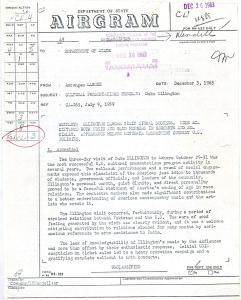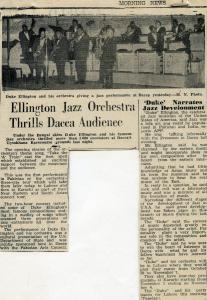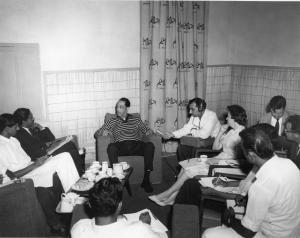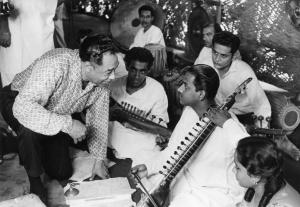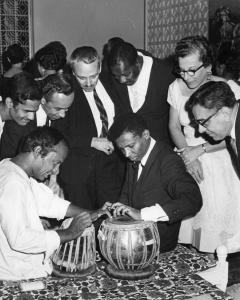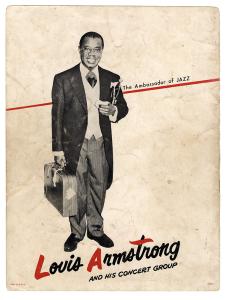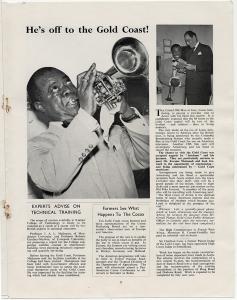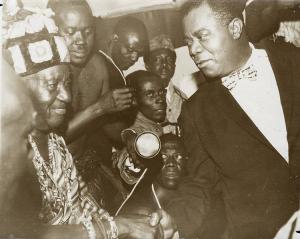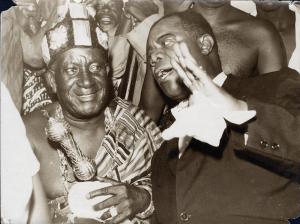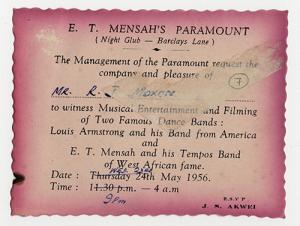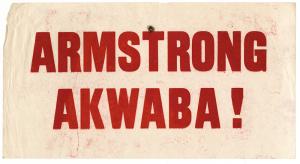In the 1950s the U.S. Department of State implemented a novel tool to fight the influence of the Soviet Union and promote pro-Western sentiment globally: the uniquely American genre of music known as jazz.
Their efforts began in 1956, when Dizzy Gillespie and his integrated band was sent on an eight-week tour of Europe, Asia, and South America. In the ensuing years, other bandleaders, including Duke Ellington, Louis Armstrong, Benny Goodman, and Dave Brubek, led similar tours to both promote American culture and project an image of interracial harmony abroad–they became known as the Jazz Ambassadors.
Ellington Selected as a Jazz Ambassador
The selection of African American bandleaders and interracial groups to represent the United States on these tours was a deliberate countermeasure to Soviet propaganda, which highlighted the racial injustices endured by Black Americans and other minority groups in the U.S.
Duke Ellington’s tour in 1963 occurred in the wake of several key events in the struggle for civil rights in the United States, such as the assassination of Medgar Evers; the bombing of the 16th Street Baptist Church in Birmingham, Alabama; and the March on Washington for Jobs and Freedom. In this context, it isn’t hard to imagine why the U.S. State Department was so keen to send Ellington and his band across the globe in an effort to improve the image of the United States internationally.
Ellington Tours the Middle East
The Booth Family Center for Special Collections holds a collection of photographs, publicity materials, and recordings that document Duke Ellington’s 1963 goodwill tour of South Asia and the Middle East.
Ellington embarked on the tour in November 1963 with two concerts in Syria. The band then traveled to Jordan’s capital, Amman, where they performed in a 2,000-year-old Roman amphitheater. According to a U.S. State Department press release, the concert was attended by members of the Jordanian royal family. Ellington would typically perform for crowds that included dignitaries, government officials, local leaders, and college students.
Soon he and the band were criss-crossing the Middle East and Asia on a tour that would take them from Syria to India and then back west to Turkey, with stops in several other countries along the way.
Ellington Arrives in Pakistan
Ellington’s visit to Pakistan is the most well documented tour stop in our holdings. Lewis C. Wendell, Jr. served as a Consul with the United States Information Agency in the region and helped facilitate Ellington’s visit. He saved a number of documents, photographs, and recordings from the Duke’s time in the area. His family donated the materials to the Booth Family Center for Special Collections in 2022.
The State Department’s report on Ellington’s tour stop in Lahore, Pakistan provides insight into the Jazz Diplomacy program. It notes that the Lahore visit “occurred, fortuitously, during a period of strained relations between Pakistan and the U.S.” Ellington himself was praised for his, “personal warmth, quiet dignity, and direct personality [which] proved to be a forceful statement of America’s coming of age in race relations.”
The report’s appraisal of the visit concludes: “Popular cultural events such as this, appealing to both students and public opinion leaders, potentially are the most effective program to create a new understanding and respect for American cultural achievements. They also help to generate a more receptive frame of reference for less palatable political and economic policies.”
Despite the tour’s success, it would ultimately be cut short. On November 22nd, President John F. Kennedy was assassinated in Dallas, Texas. The remainder of the goodwill tour was promptly canceled and Ellington and his Orchestra returned to the United States.
Ellington Finds Inspiration on the Tour
The goodwill tour exposed Ellington and his band to a variety of musical traditions across the globe. These two photographs document Ellington and Sam Woodyard meeting local musicians in New Delhi, including Chatur Lal, described by the State Department as "India's greatest tabla artist." The music of South Asia and the Middle East would inspire a number of Ellington’s compositions that are featured on the 1967 album Far East Suite.
Other Jazz Ambassadors
The Booth Family Center for Special Collections also holds materials related to Louis Armstrong’s 1956 visit to Accra, Ghana (then the capital of the British Gold Coast Colony). These include concert programs, advertisements, and photographs of Armstrong with local Ghanaians. For more information, please see Anna Harwell Celenza’s exhibition Jazz Ambassador Louis Armstrong, Ghana 1956.
Exhibition curated by John Zarrillo, Head of Archival Processing

